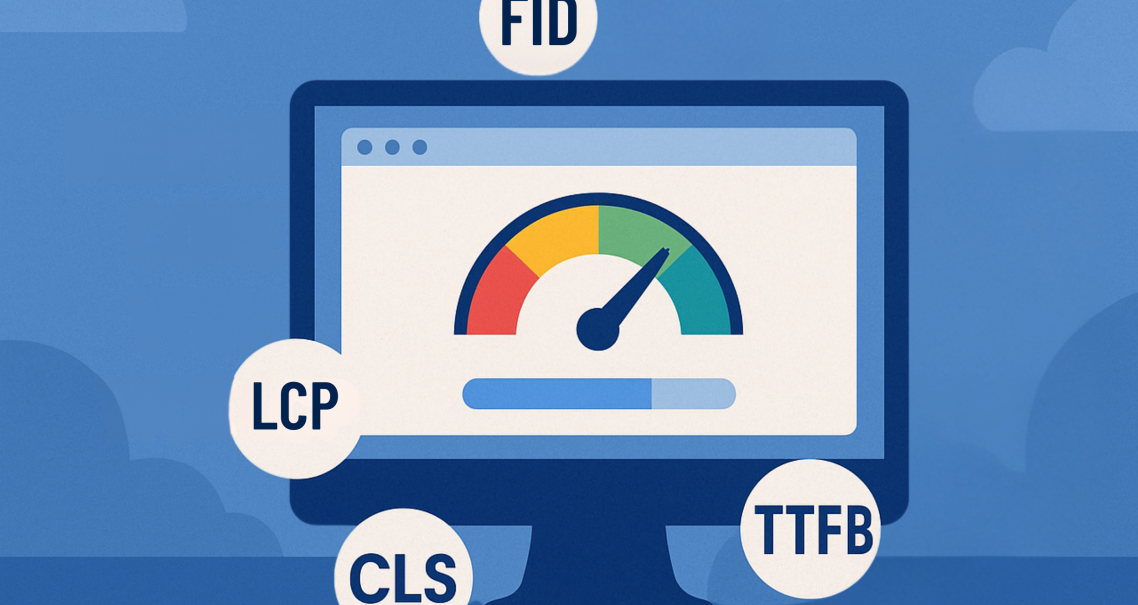
Demystifying Core Web Vitals for WordPress
Website performance isn’t just about how fast a page feels when you load it. Google measures speed and user experience using specific metrics called Core Web Vitals. These metrics affect not only search rankings but also how visitors perceive your site.
The challenge for many site owners is that performance tools can be confusing. PageSpeed Insights shows a score, Core Web Vitals list separate numbers, and results often look different on mobile and desktop. This article breaks it all down in plain language so you know what to measure and how to improve it.
What Core Web Vitals Really Mean
Google uses three primary signals to judge real-world experience:
Largest Contentful Paint (LCP)
-
Measures how quickly the main content of a page loads.
-
Think of it as the time it takes for the biggest element, often a hero image or headline, to appear.
-
Good score: under 2.5 seconds.
Interaction to Next Paint (INP)
-
Replaced First Input Delay (FID) in 2024.
-
Measures how fast the site reacts when a user clicks or taps.
-
Good score: under 200 milliseconds.
Cumulative Layout Shift (CLS)
-
Measures how stable the page is while loading.
-
If images, ads, or buttons jump around, you have poor CLS.
-
Good score: under 0.1.
Together, these metrics reflect how quickly people see content, interact with it, and enjoy a stable experience.
Why PageSpeed Insights Scores Differ
A common frustration is seeing a PageSpeed score of 40 on mobile while desktop shows 90. It feels inconsistent, but the difference has a clear explanation.
-
Field Data comes from the Chrome User Experience Report (CrUX). It represents real visitors on different devices and networks.
-
Lab Data is simulated using tools like Lighthouse. It’s useful for debugging but doesn’t always match reality.
Mobile devices often have slower CPUs and networks, which is why mobile scores tend to look worse. That doesn’t mean your site is broken — it means users on average phones in average conditions are having a different experience.
How to Improve LCP
LCP problems often come from slow servers or large images. To improve:
-
Use a fast host with updated PHP and caching.
-
Preload your hero image and set fetchpriority=”high”.
-
Compress and resize images, ideally converting them to WebP or AVIF.
-
Inline critical CSS so styles load quickly.
-
Defer non-essential JavaScript.
How to Improve INP
Slow interaction usually points to heavy JavaScript. To fix it:
-
Minimize scripts and split long tasks.
-
Use lazy loading so code runs only when needed.
-
Audit third-party scripts like chat widgets or tracking tags.
-
Consider lightweight frameworks or native solutions instead of bulky libraries.
How to Improve CLS
Visual instability is frustrating for users and easy to spot. Improve CLS by:
-
Always defining width and height for images and ads.
-
Preloading fonts so they don’t cause layout jumps.
-
Reserving space for embeds or ads with placeholders.
-
Lazy loading below-the-fold content without affecting above-the-fold stability.
Checklist for Mobile Performance
Since mobile is often the hardest to optimize, here’s a simple checklist:
-
Compress and resize images before upload
-
Convert images to WebP or AVIF
-
Preload key fonts with font-display: swap
-
Avoid render-blocking JavaScript
-
Defer or delay third-party scripts
-
Use a caching plugin like WP Rocket or LiteSpeed Cache
-
Add a CDN to reduce distance between server and visitor
Running through this list before testing again will almost always lift scores.
Prioritizing Improvements
It’s easy to get lost in the numbers. The best approach is step-by-step:
-
Test three important pages (homepage, one blog, one product or service page).
-
See which metric is failing first — LCP, INP, or CLS.
-
Fix that one before moving to the next.
Often, solving LCP with a faster host and optimized images makes the biggest difference. Once loading feels fast, then refine interactivity and stability.
Core Web Vitals may sound technical, but they boil down to three simple questions. How quickly can people see your content? How smoothly can they interact with it? And does the page stay steady as it loads?
Focus on LCP, INP, and CLS in that order. Don’t panic over a single lab score. Instead, measure over time, improve the biggest bottlenecks, and aim for a site that feels instant and smooth on an average phone. That is what keeps visitors happy and what Google rewards.



